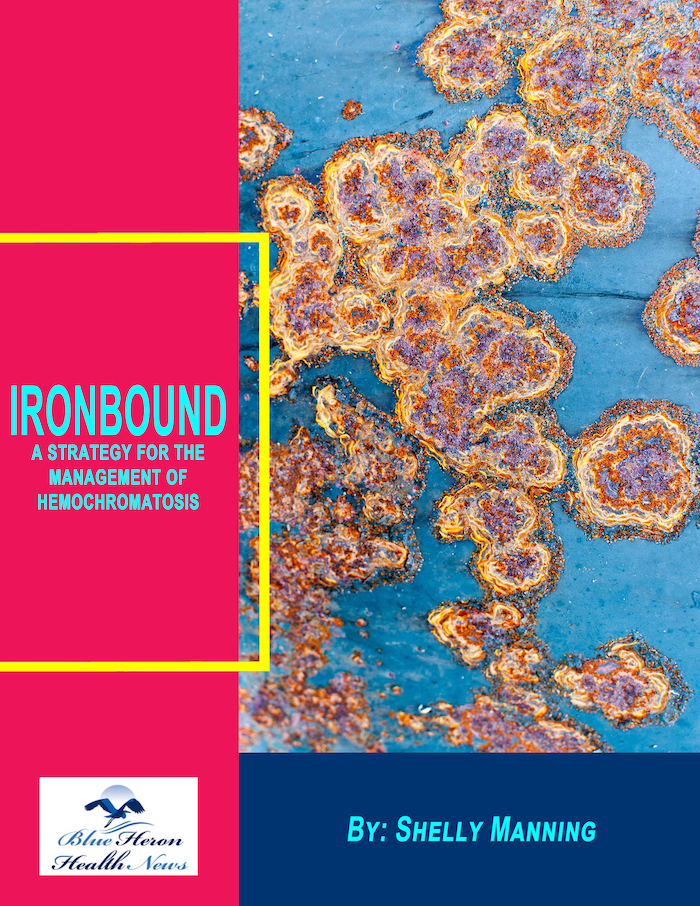
Ironbound™ A Strategy For The Management Of Hemochromatosis By Shelly Manning The 5 superfoods explained by Shelly Manning in this eBook play an important role in reducing the levels of HCT. The absorption of the excessive amount of iron by the genes of HCT can be blocked by these superfoods. In this way, the information provided in this eBook can help in resolving the problem of excess iron in your body naturally without any risk of side effects.
What is hereditary hemochromatosis?
Comprehensive Guide to Hereditary Hemochromatosis
Hereditary hemochromatosis is a genetic disorder that leads to excessive absorption and storage of iron in the body. This condition can cause iron overload, which may result in significant damage to various organs and tissues. Understanding hereditary hemochromatosis, its causes, symptoms, diagnosis, treatment, and management is crucial for those affected by the condition and for healthcare providers.
1. Definition and Overview
1.1 Definition
- Hereditary Hemochromatosis (HH): A genetic disorder characterized by increased intestinal absorption of iron, leading to excessive iron accumulation in the body. It is the most common form of hemochromatosis.
1.2 Types of Hereditary Hemochromatosis
- Type 1: The most common form, also known as classic hereditary hemochromatosis, caused by mutations in the HFE gene.
- Type 2: Also known as juvenile hemochromatosis, caused by mutations in the HJV or HAMP genes.
- Type 3: Caused by mutations in the TFR2 gene.
- Type 4: Also known as ferroportin disease, caused by mutations in the SLC40A1 gene.
2. Causes and Genetic Mutations
2.1 HFE Gene Mutations
- C282Y Mutation: The most common mutation associated with type 1 hereditary hemochromatosis. Individuals who are homozygous (have two copies) for this mutation are at high risk.
- H63D Mutation: Another mutation in the HFE gene. Compound heterozygotes (one C282Y and one H63D mutation) are at moderate risk.
- S65C Mutation: Less common and usually associated with a milder form of the disease.
2.2 Other Genetic Mutations
- HJV and HAMP: Mutations in these genes cause type 2 (juvenile) hemochromatosis, leading to early-onset iron overload.
- TFR2: Mutations in this gene cause type 3 hemochromatosis, with symptoms similar to type 1.
- SLC40A1: Mutations in this gene cause type 4 (ferroportin disease), affecting iron transport out of cells.
3. Pathophysiology
3.1 Iron Regulation
- Normal Iron Absorption: The body regulates iron absorption from the diet based on its needs, primarily controlled by the hormone hepcidin.
- Disrupted Regulation in HH: Genetic mutations reduce hepcidin production or activity, leading to uncontrolled iron absorption from the intestine, resulting in iron overload.
3.2 Iron Overload and Organ Damage
- Iron Storage: Excess iron is stored in organs such as the liver, heart, pancreas, and joints.
- Oxidative Stress: Excess iron generates free radicals through the Fenton reaction, causing oxidative damage to cells and tissues.
4. Symptoms and Complications
4.1 Early Symptoms
- Fatigue: Chronic tiredness and weakness.
- Joint Pain: Particularly in the hands and fingers.
- Abdominal Pain: Discomfort or pain in the upper right quadrant.
4.2 Intermediate Symptoms
- Skin Changes: Bronze or gray discoloration of the skin.
- Liver Symptoms: Enlargement (hepatomegaly) and elevated liver enzymes.
- Cardiovascular Symptoms: Irregular heartbeats, cardiomyopathy, and heart failure.
- Diabetes: Known as “bronze diabetes” due to iron deposition in the pancreas.
4.3 Advanced Symptoms
- Cirrhosis: Scarring of the liver tissue, leading to liver dysfunction.
- Liver Cancer: Increased risk of hepatocellular carcinoma.
- Severe Arthritis: Chronic joint pain, stiffness, and swelling.
- Endocrine Disorders: Hypogonadism, hypothyroidism.
5. Diagnosis
5.1 Medical History and Physical Examination
- Family History: Assessing family history for hemochromatosis or related conditions.
- Physical Examination: Checking for signs of organ damage, skin discoloration, or joint abnormalities.
5.2 Laboratory Tests
- Serum Ferritin: Elevated levels indicate increased iron stores.
- Transferrin Saturation: Levels above 45% are indicative of iron overload.
- Liver Function Tests: Assessing liver function and damage.
5.3 Genetic Testing
- HFE Gene Testing: Identifying mutations in the HFE gene (C282Y and H63D) to confirm hereditary hemochromatosis.
- Other Genetic Tests: Testing for mutations in other relevant genes (HJV, HAMP, TFR2, SLC40A1) if HFE mutations are not present.
5.4 Imaging and Biopsy
- MRI: Assessing iron accumulation in the liver and other organs.
- Liver Biopsy: Examining liver tissue to assess iron overload and liver damage.
6. Treatment and Management
6.1 Phlebotomy
- Regular Blood Removal: The primary treatment, involves removing blood to reduce iron levels.
- Frequency: Weekly phlebotomy may be required initially, followed by maintenance phlebotomy every few months.
6.2 Chelation Therapy
- Iron Chelators: Medications like deferoxamine, deferasirox, or deferiprone bind to iron and help remove it from the body.
6.3 Dietary Management
- Limit Iron Intake: Avoiding iron-rich foods and supplements.
- Avoid Vitamin C Supplements: Vitamin C increases iron absorption.
- Avoid Alcohol: Reducing alcohol intake to prevent liver damage.
6.4 Monitoring and Follow-Up
- Regular Blood Tests: Monitoring serum ferritin and transferrin saturation.
- Liver Surveillance: Regular imaging and tests to monitor liver health.
7. Complications and Their Management
7.1 Liver Disease
- Cirrhosis Management: Monitoring for liver cirrhosis and managing complications.
- Liver Transplant: Considered in severe cases of liver failure.
7.2 Diabetes Management
- Blood Sugar Control: Regular monitoring and management of blood glucose levels.
7.3 Heart Disease Management
- Cardiac Monitoring: Regular monitoring of heart function and managing complications.
7.4 Joint Pain Management
- Pain Relief: Using nonsteroidal anti-inflammatory drugs (NSAIDs) or other pain relievers.
- Physical Therapy: Engaging in physical therapy to maintain joint mobility and function.
8. Prevention and Genetic Counseling
8.1 Genetic Counseling
- Family Planning: Genetic counseling for individuals with a family history of hemochromatosis.
- Screening: Recommending genetic testing for family members to identify those at risk.
8.2 Lifestyle Modifications
- Healthy Diet: Adopting a balanced diet low in iron and alcohol.
- Regular Check-Ups: Routine medical check-ups to monitor health and detect early signs of complications.
9. Research and Future Directions
9.1 Advances in Genetic Research
- Genetic Studies: Ongoing research to better understand the genetic basis of hemochromatosis.
- New Genetic Mutations: Identifying other genetic mutations that may contribute to iron overload conditions.
9.2 Novel Therapies
- New Treatments: Developing new treatments to reduce iron overload more effectively and with fewer side effects.
- Gene Therapy: Exploring gene therapy options to correct the underlying genetic mutations.
10. Conclusion
Hereditary hemochromatosis is a genetic disorder that leads to excessive iron absorption and storage, causing significant health issues if left untreated. Early diagnosis, effective treatment, and regular monitoring are essential to manage iron levels and prevent complications. Understanding the causes, symptoms, diagnosis, and treatment options for hereditary hemochromatosis helps improve outcomes and quality of life for those affected by this condition. Ongoing research and advancements in medical science continue to enhance our understanding and treatment of hemochromatosis, offering hope for better management and prevention in the future.
Ironbound™ A Strategy For The Management Of Hemochromatosis By Shelly Manning The 5 superfoods explained by Shelly Manning in this eBook play an important role in reducing the levels of HCT. The absorption of the excessive amount of iron by the genes of HCT can be blocked by these superfoods. In this way, the information provided in this eBook can help in resolving the problem of excess iron in your body naturally without any risk of side effects.
